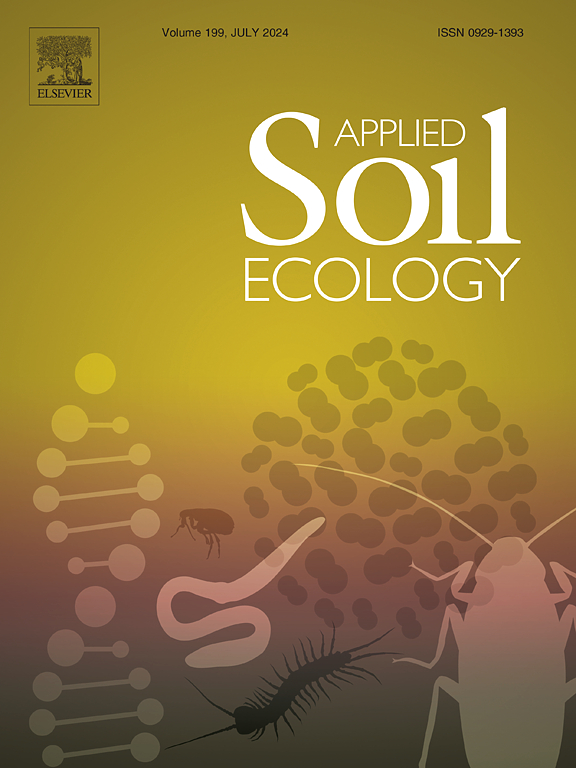Mid-term (5 years) impacts of wildfire on soil chemical and biological properties in a UK peatland
IF 4.8
2区 农林科学
Q1 SOIL SCIENCE
引用次数: 0
Abstract
Peat degradation due to human activities and global change exposes peatlands to increasing fire risk. Given their key ecological role in carbon storage and water filtration, studying fire impacts on a UK peatland is significant in a global context. This study aimed to assess the medium-term impacts of the 2018 wildfire on peatland soil within the Roaches Nature Reserve (UK). To test whether fire effects were still evident five years after the event and whether marginally affected areas exhibited greater soil recovery, several peat characteristics were evaluated in 2023 at increasing distances from the unburnt control area toward the fire's ignition point, in the order S1, S2, S3 and S4. Results confirmed that the fire effect was still evident after five years, showing a significant increase in pH from 3.59 ± 0.04 in control to 3.85 ± 0.03 in burnt peat, a 60 and 70 % reduction in water and organic carbon content compared to control (65.2 ± 1.33 % and 42.9 ± 1.80 %, respectively), up to 85 % reductions in microbial carbon and nitrogen relative to control (2.48 ± 0.12 and 0.17 ± 0.01 g kg−1, respectively). The observed spatial gradient of fire impact was: S4 ≫ S3 = S1 ≥ S2, only partially confirming the second hypothesis. As expected, S4 site, farther from the unburnt area, exhibited the worst recovery, but S1 site, proximal to the unburnt area, did not show the highest recovery. This is probably due to the variable nature of peatland fire dynamics and post-fire recovery, highlighting the need for more detailed analyses in future studies.
求助全文
约1分钟内获得全文
求助全文
来源期刊

Applied Soil Ecology
农林科学-土壤科学
CiteScore
9.70
自引率
4.20%
发文量
363
审稿时长
5.3 months
期刊介绍:
Applied Soil Ecology addresses the role of soil organisms and their interactions in relation to: sustainability and productivity, nutrient cycling and other soil processes, the maintenance of soil functions, the impact of human activities on soil ecosystems and bio(techno)logical control of soil-inhabiting pests, diseases and weeds.
 求助内容:
求助内容: 应助结果提醒方式:
应助结果提醒方式:


